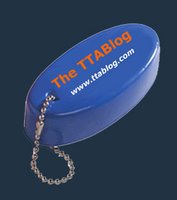CAFC Vacates TTAB's "MOSKOVSKAYA" Vodka Ruling, Clarifies 2(e)(3) Materiality Test
The U.S. Court of Appeals for the Federal Circuit has vacated the TTAB's decision in the MOSKOVSKAYA case (TTABlogged here), in which the Board found the mark to be primarily geographically deceptively misdescriptive of vodka. (TTAB decision here). The CAFC ruled that the Board had improperly applied the materiality test of Section 2(e)(3) because it failed to consider whether a substantial portion of all relevant consumers (not just Russian speakers) is likely to be deceived. And so the court remanded the case to the Board for proper application of that test. In re Spirits International, N.V., 90 USPQ2d 1489 (Fed. Cir. 2009) [precedential]. [.mp3 of CAFC oral argument here].

Doctrine of Foreign Equivalents: The CAFC's decision in Palm Bay gave rise to some confusion about how the doctrine of foreign equivalents is to be applied. Here, the court further explained its view. It noted the "general requirement of translation" under the doctrine and reiterated that it applied "only in those situations where the ordinary American consumer would stop and translate the mark into English." The ordinary American consumer encompasses "all American purchasers, including those proficient in a non-English language who would ordinarily be expected to translate the words into English." [Emphasis supplied.]
The court pointed out that there are situations in which the doctrine does not require translation with respect to foreign speakers:
The ordinary American consumer would not translate VEUVE CLICQUOT because its literal translation would be irrelevant to even those ordinary American consumers who speak French. Palm Bay, 396 F.3d at 1377. Similarly, CORDON BLEU has such a well established alternative meaning that the literal translation is Irrelevant because even French speakers would not translate the mark. Cont’l Nut Co. v. Cordon Bleu, 494 F.2d 1397, 1398 (CCPA 1974). Additionally, some marks would not be translated because of the particular context in which they occur. See In re Tia Maria, Inc., 188 USPQ 524, 525-26 (TTAB 1975). There may be many non-English marks that will not be translated in context but instead accepted at face value by the ordinary American consumer, including those familiar with the literal meaning of the mark in the non-English language.
Here, however, Spirits did not contend "that the specific context of the mark is such that an ordinary American purchaser sufficiently familiar with Russian would nonetheless take the mark at face value." [TTABlog query: so who has the burden of proof regarding whether a foreign-language term will be translated by the non-English speaker, the PTO or the Applicant? Apparently the PTO.]
Materiality under Section 2(e)(3): The CAFC ruled in California Innovations that a refusal to register under Section 2(e)(3) requires that the misdescription must materially affect the public's decision to purchase the goods. But it did not address whether the necessary materiality "embodies a requirement that a significant portion of the relevant consumers be deceived." [Emphasis supplied]. Here the court held that "subsection (e)(3) does incorporate such a requirement, and that the appropriate inquiry for materiality purposes is whether a substantial portion of the relevant consumers is likely to be deceived, not whether any absolute number or particular segment of the relevant consumers (such as foreign language speakers) is likely to be deceived."
The Board then observed that the relevant population is "often the entire U.S. population interested in purchasing the product or service." However, in some cases the use of a non-English mark evidences that the product is targeted to those who understand the language. In those cases, the relevant consumers will comprise the members of the targeted community and therefore the consumers who speak the language "could comprise a substantial portion of the relevant consumers." [E.g., a mark in Polish for canned ham marketed to the Polish community.]
The Board recognized that under Section 2(e)(3) "an appreciable number" of consumers for the good must be deceived.However it rejected a requirement of "proportionality," i.e., it failed to consider whether Russian speakers were a "substantial portion of the intended audience."
Because the TTAB "applied an incorrect test," the court remanded the case. Although it expressed no opinion as to whether a substantial portion of the intended audience in this case would be materially deceived, it noted that only 0.25% of this country's population speaks Russian.
If only one quarter of one percent of the relevant consumers was deceived, this would not be, by any measure, a substantial portion. However, it may be that Russian speakers are a greater percentage of the vodka-consuming public; that some number of non-Russian speakers would understand the mark to suggest that the vodka came from Moscow; and that these groups would together be a substantial portion of the intended audience.
And so the case returns to the TTAB to determine "whether there is a prima facie case of material deception under the correct legal test in the first instance."
TTABlog note: Will the Board send the case back to the PTO for examination in light of this new standard? Shouldn't the PTO (and the Applicant as well) have an opportunity to offer additional evidence in light of this new standard?
Since the number of Russian-speaking Americans is so small, it seems that the PTO, in order to support the refusal, will have to establish that non-Russian speaking Americans drink vodka (judicial notice, anyone?) and that a substantial portion of them will perceive the mark MOSKOVSKAYA as an indication that the vodka originates in Moscow.
Text Copyright John L. Welch 2009.















 Priority: Again, Podango's admissions did not go to the issue of the status of Opposer's pleaded registration. Consequently, ICL did not prove priority: another ground for dismissal.
Priority: Again, Podango's admissions did not go to the issue of the status of Opposer's pleaded registration. Consequently, ICL did not prove priority: another ground for dismissal.













